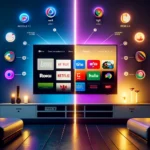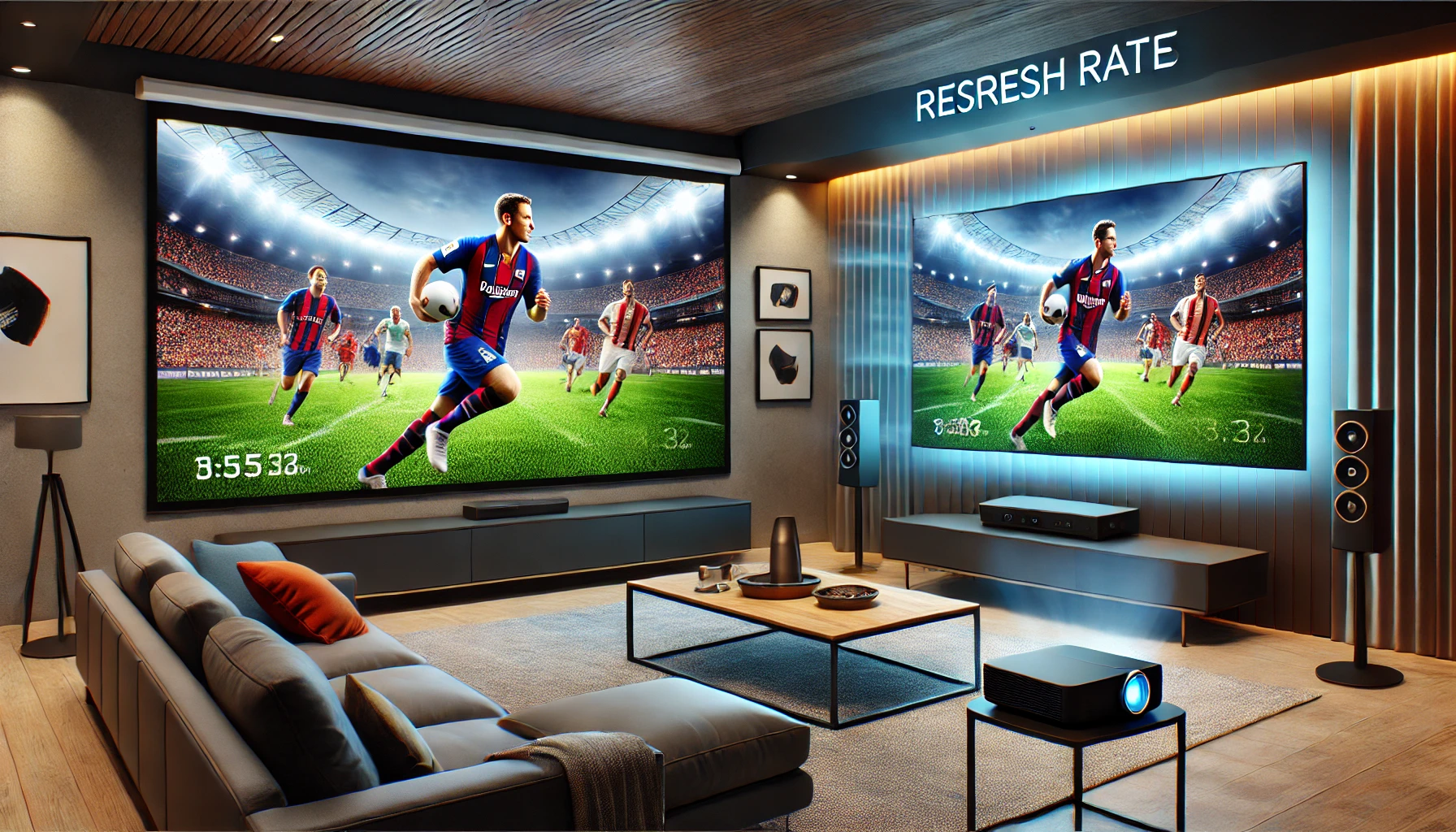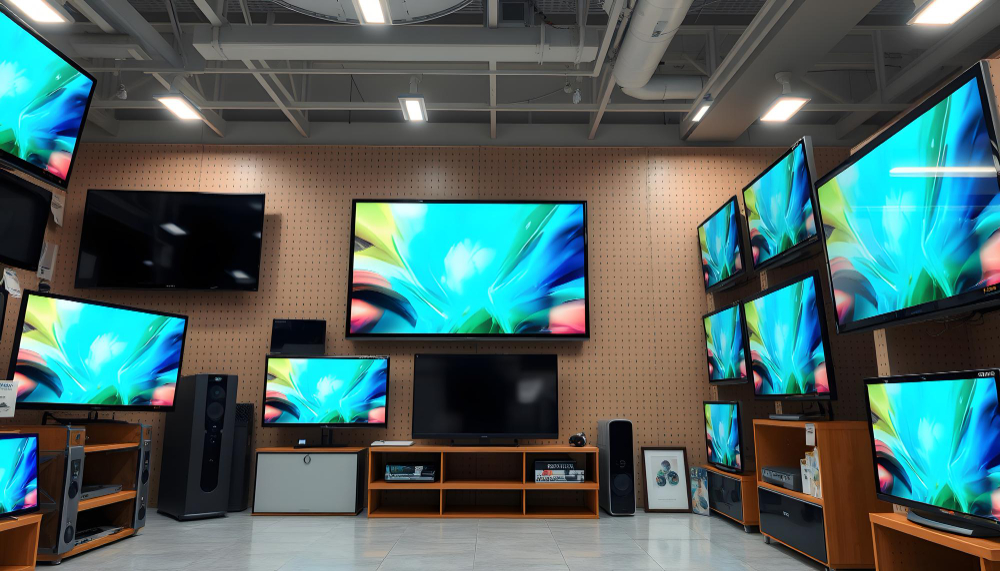When deciding between OLED and QLED, evaluating their unique strengths is crucial. OLED technology offers superior black levels and contrast, making it ideal for dark environments and providing stunning color accuracy with minimal calibration. Conversely, QLED excels in brightness, making it more suitable for well-lit rooms, and it avoids burn-in issues, offering a longer lifespan. While OLED typically comes with a higher price tag, its picture quality may justify the investment for many consumers. Understanding these nuances can guide your choice effectively—further exploring these technologies will clarify their benefits for your needs.
Key Takeaways
- Choose OLED for superior black levels and contrast, which are ideal for dark environments and cinematic experiences.
- Opt for QLED if you prioritize brightness and vibrant colors in well-lit rooms, especially for HDR content.
- Consider burn-in risk with OLED; QLED is better for varied content and has a longer lifespan.
- OLED offers better viewing angles and motion performance, making it perfect for fast-paced media.
- Factor in budget: OLEDs are pricier but offer long-term value, while QLEDs are more affordable and provide solid performance.
Understanding OLED Technology
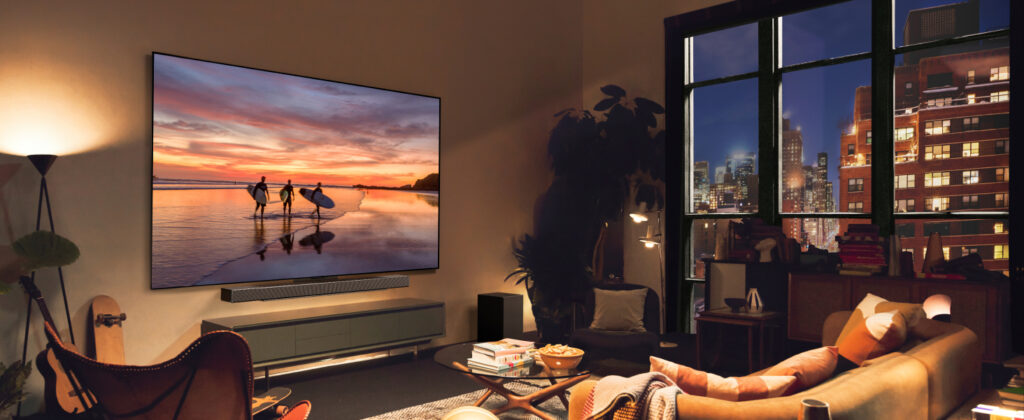
Understanding OLED Technology is essential for anyone looking to make informed decisions in the domain of display technologies. OLED, or Organic Light Emitting Diode, leverages individual pixel illumination, allowing each pixel to emit its own light. This characteristic enables deeper blacks and a superior contrast ratio compared to traditional LCD technologies, as pixels can be turned off entirely, resulting in true black levels.
One of the most remarkable advantages of OLED is its impressive color gamut. With the ability to produce vibrant colors and a wide range of hues, OLED displays excel in rendering lifelike images. Additionally, OLED technology boasts significant energy efficiency, as it consumes less power when displaying darker images compared to brighter scenes.
The thickness advantage of OLED displays is also significant. As they do not require a separate backlight, OLED panels can be made incredibly thin, appealing for modern aesthetics and design. However, the manufacturing process of OLED technology is complex and can result in higher production costs compared to other display types. Overall, understanding these fundamental aspects of OLED technology can aid consumers in making educated choices tailored to their specific viewing preferences and needs.
Understanding QLED Technology
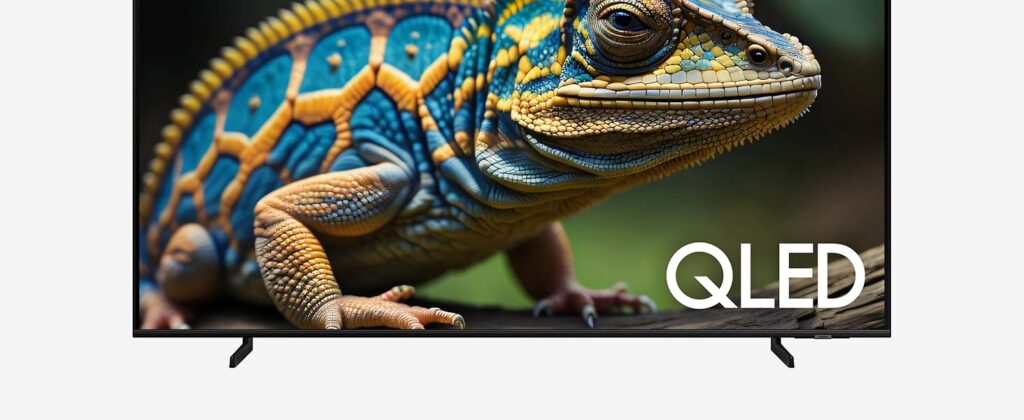
While OLED technology is known for its exceptional color depth and true black levels, QLED, or Quantum Dot LED, presents a compelling alternative within the display landscape. QLED technology utilizes quantum dots to enhance color reproduction, allowing for vibrant QLED color that stands out in bright environments. Unlike OLED’s self-emissive pixels, QLED screens rely on LED backlighting, which can result in higher brightness levels and improved visibility in well-lit rooms.
One of the significant advantages of QLED is its resolution capabilities. With support for 4K and even 8K displays, QLED resolution can deliver sharp and detailed images, making it an attractive choice for home theaters. Additionally, QLED gaming has gained traction due to its low input lag and fast refresh rates, catering to the demands of competitive gamers.
Importantly, QLED longevity is another factor to evaluate. QLED displays are less prone to burn-in compared to OLED, providing a longer lifespan for viewers who may use their screens for varied content. Overall, QLED technology offers a robust solution for those prioritizing brightness, longevity, and versatility in their viewing experiences.
Picture Quality Comparison
When comparing picture quality between OLED and QLED displays, several key factors come into play, influencing the viewer’s overall experience. OLED technology is renowned for its exceptional black levels, achieved through self-emissive pixels that can turn off completely. This results in stunning color contrast, allowing for deeper blacks and vibrant colors that create a more immersive viewing experience. In contrast, QLED displays utilize a backlight, which can sometimes lead to blooming effects and less effective black levels, although advancements in local dimming have improved this aspect.
HDR performance is another critical area where OLED excels, as it can deliver a wider dynamic range, enhancing the viewer’s ability to see details in both the darkest and brightest scenes. However, QLED’s quantum dot technology offers impressive brightness levels, which can enhance HDR content considerably.
Despite these strengths, OLED displays are susceptible to image retention or burn-in, particularly when displaying static images over extended periods. QLED screens, on the other hand, are less prone to this issue. Both technologies employ sophisticated upscaling technology, which improves lower-resolution content, but the effectiveness may vary between models. Ultimately, the choice hinges on personal preference and viewing habits.
Brightness and Color Accuracy
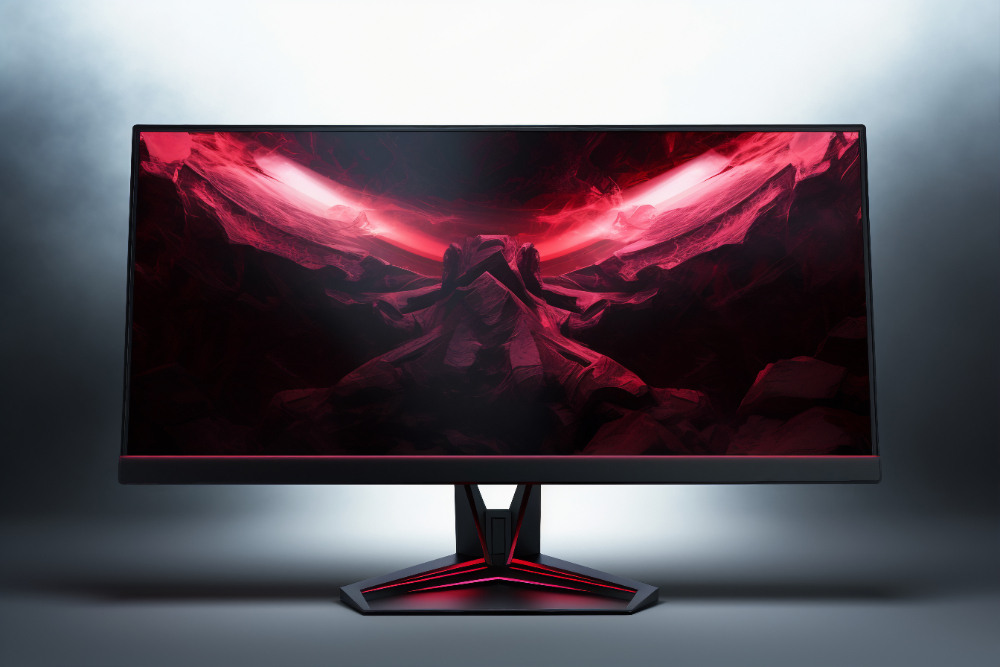
Brightness and color accuracy are pivotal factors in evaluating the performance of OLED and QLED displays, greatly impacting the viewing experience. With regard to peak brightness, QLED technology often excels, achieving higher luminance levels, which can enhance HDR performance. This capability allows QLED TVs to display a wider range of colors at high brightness levels, contributing to vibrant images.
Conversely, OLED displays, while typically lower in peak brightness, offer superior color accuracy due to their self-emissive nature. Each pixel can turn off completely, resulting in true blacks and an extended color gamut. This characteristic aids in producing more natural and lifelike images, particularly in darker scenes.
To better understand the differences, consider the following table:
| Feature | OLED | QLED |
|---|---|---|
| Peak Brightness | Moderate | High |
| Color Accuracy | Excellent | Good |
| Color Gamut | Wide | Very Wide |
| Display Calibration | Minimal needed | Calibration needed |
Both technologies have their strengths in brightness and color accuracy, making the choice largely dependent on individual viewing preferences and conditions.
Viewing Angles and Distortion
Viewing angles and distortion considerably influence the overall performance and usability of display technologies like OLED and QLED. When evaluating viewing experiences, OLED displays typically excel due to their superior angle performance. They maintain consistent color accuracy and brightness even at extreme angles, which is particularly beneficial in multi-viewing environments. Conversely, QLED displays often exhibit noticeable distortion effects as the viewing angle widens. Users may encounter color shifts and diminished brightness, which can detract from the overall experience, especially in settings where viewers are not directly in front of the screen.
Moreover, screen reflections can exacerbate these issues. QLEDs, while they employ anti-reflective coatings, may still struggle under certain lighting conditions, leading to glare that interferes with color reproduction. OLEDs, with their self-emissive technology, tend to manage reflections more effectively, allowing for a more immersive viewing experience.
Ultimately, the choice between OLED and QLED hinges considerably on how viewing angles and distortion affect personal preferences and usage scenarios. For those prioritizing wide viewing angles and minimal distortion, OLED remains a compelling option, while QLED may appeal to users who primarily watch from a front-facing position.
Response Time and Motion Blur
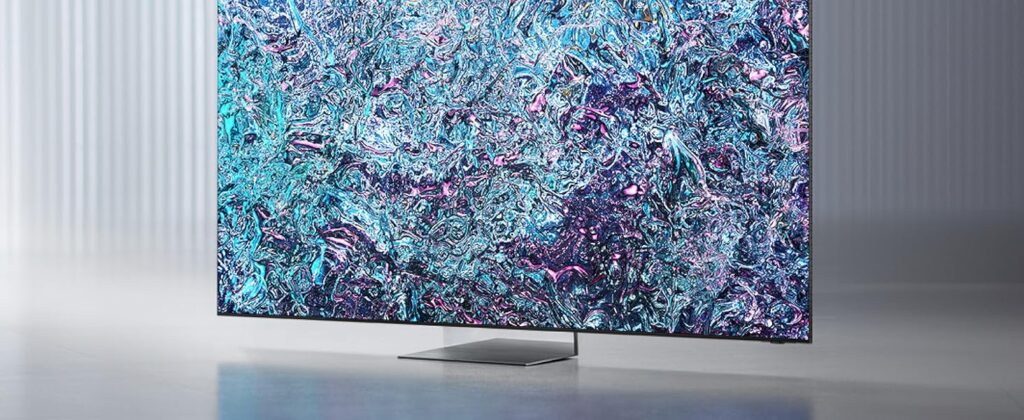
The performance of OLED and QLED displays extends beyond viewing angles to encompass response time and motion blur, two critical factors that greatly influence the visual experience, particularly in fast-paced content such as gaming and sports. In a response time comparison, OLED technology outshines QLED, boasting near-instantaneous pixel response rates. This rapid response minimizes motion blur effects, allowing for sharper images during fast action sequences, which is essential for immersive gaming performance and dynamic video playback.
QLED displays, while improving in this area, typically experience higher latency, resulting in more pronounced motion blur during quick movements. This can detract from the viewing experience, particularly in scenarios where clarity is paramount, such as high-speed racing games or action-packed films. As gaming becomes increasingly competitive, the advantages of OLED’s superior response time become even more apparent, providing gamers with the edge they need to react swiftly.
Lifespan and Burn-in Issues
When considering the longevity and reliability of display technologies, lifespan and burn-in issues emerge as significant factors in the OLED versus QLED debate. OLED displays are known for their vibrant colors and deep blacks, but they are susceptible to burn-in, a phenomenon where static images can persist on the screen over time. This risk is influenced by usage habits; frequent exposure to static content can accelerate burn-in, raising concerns about display durability.
In contrast, QLED displays employ a different technology that mitigates burn-in risks, offering a longer lifespan on average. The lifespan comparison indicates that QLEDs generally outlast their OLED counterparts, with many rated for up to 100,000 hours of use, while OLEDs may start showing signs of degradation after approximately 30,000 to 50,000 hours.
For consumers, understanding burn-in prevention techniques, such as varying content and utilizing screen savers, can extend the life of OLED panels. Additionally, warranty options for both technologies can provide peace of mind, with many manufacturers offering specific coverage for burn-in issues. Ultimately, the choice between OLED and QLED hinges on individual preferences and usage scenarios.
Performance in Bright Environments
Performance in bright environments is an essential aspect to take into account when evaluating OLED and QLED technologies. Both display types exhibit unique strengths and weaknesses that can affect viewing experiences in well-lit settings.
- Sunlight Reflection: QLED screens typically incorporate anti-reflective coatings, minimizing sunlight reflection and ensuring better visibility during daytime viewing.
- Ambient Lighting: QLED televisions excel in ambient lighting situations due to their higher peak brightness levels, allowing for vibrant colors and detailed shadows even in sunny conditions.
- Glare Reduction: OLEDs generally struggle with glare reduction, as their reflective surfaces can detract from image quality in bright environments. However, some newer models have improved screen coatings to mitigate this issue.
- Contrast Enhancement: While OLED displays offer superior contrast ratios due to their pixel-level illumination, the effectiveness can diminish under bright lighting, making QLEDs a more viable option for maintaining image integrity in such conditions.
Performance in Dark Environments
In dark environments, the differences between OLED and QLED technologies become markedly pronounced, greatly influencing the viewing experience. OLED displays excel in these settings due to their ability to achieve true black levels, resulting in exceptional contrast ratios. Each pixel in an OLED panel emits its own light, allowing for complete pixel shutdown and thereby creating deeper blacks that enhance overall picture quality. This characteristic is particularly beneficial for viewers watching content with high dynamic range or darker scenes, as it accentuates details that might otherwise be lost.
Conversely, QLED technology relies on a backlight, which can lead to blooming effects, particularly noticeable in dark room conditions. While QLEDs can produce brighter images, the presence of ambient light can diminish the perceived quality of the contrast ratios, making them less ideal for purely dark environments.
Ultimately, viewer preference, room size, and content type will dictate the best choice. For those who frequently watch films or play games in low-light settings, the superior black levels of OLED may be preferable. However, for larger rooms or varied content types, QLED might still hold significant appeal.
Price Range and Budget Considerations
Budget-conscious consumers often find themselves weighing the cost differences between OLED and QLED televisions, as these technologies occupy distinct price ranges. Understanding these price differences is essential for making an informed decision, particularly when considering long-term value and potential financing plans.
When conducting a cost analysis, the following factors should be taken into account:
- Initial Investment: OLEDs typically carry a higher upfront cost, often exceeding QLEDs by several hundred dollars.
- Long-term Value: OLEDs may offer superior picture quality, which could translate into a longer lifespan of satisfaction, justifying the initial expense.
- Budget Options: QLEDs generally provide more affordable alternatives, particularly in mid-range models, making them accessible for a wider audience.
- Sales and Discounts: Seasonal sales can considerably bridge the price gap, allowing consumers to capitalize on deals for either technology.
Best Brands for OLED and QLED
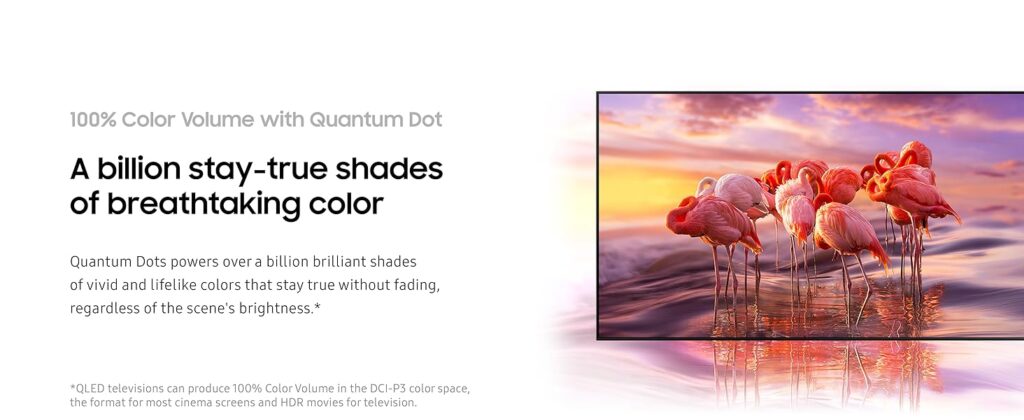
When exploring the best brands for OLED and QLED televisions, several key players emerge that are renowned for their quality and innovation. Leading the OLED brands is LG, known for its cutting-edge display technology and superior picture quality, particularly in dark scenes, making it a favorite among cinephiles. Sony also stands out with its Bravia series, offering exceptional color accuracy and processing capabilities that enhance overall viewing experiences.
On the QLED side, Samsung is the most prominent name, celebrated for its vibrant colors and impressive brightness, which greatly enhances gaming performance, particularly in high dynamic range (HDR) content. TCL and Hisense are also notable QLED brands, offering competitive pricing without sacrificing quality, attracting budget-conscious consumers.
Both OLED and QLED brands often provide attractive warranty options, ensuring customer confidence in their purchase. Ultimately, the choice between OLED and QLED brands hinges on personal preferences regarding display characteristics, usage scenarios, and the importance of factors like gaming performance and warranty support. Evaluating these brands will guide consumers towards making an informed decision that best suits their needs.
Final Recommendations for Buyers
Maneuvering the selection of OLED and QLED televisions requires careful consideration of various factors to guarantee the best investment. Prospective buyers should evaluate their specific needs and preferences to determine which technology aligns best with their usage scenarios.
- Picture Quality: If superior contrast and vibrant colors are paramount, OLED may be the preferred choice. Conversely, for brighter environments, QLED’s enhanced brightness and color volume may be advantageous.
- Long-Term Investment: Consider the longevity of each technology. OLED displays can suffer from burn-in issues, while QLEDs typically offer more durability, making them a safer long-term investment.
- Warranty Options: Investigate the warranty offerings from manufacturers. QLED models often come with better warranty coverage, providing reassurance against potential defects.
- Future Technology: Assess how each technology may evolve. With advancements in smart TV features and display technologies, keeping an eye on future developments can influence buyer preferences.
Ultimately, aligning these factors with personal priorities will guarantee that you make a well-informed decision, maximizing both enjoyment and value from your television investment.
Frequently Asked Questions
Can I Use OLED or QLED for Gaming?
Both OLED and QLED displays can enhance gaming performance, offering exceptional color accuracy and refresh rates. However, OLEDs may present burn-in risks, while QLEDs typically feature lower input lag, making them suitable for competitive gaming scenarios.
What Are the Best Sizes for OLED and QLED TVS?
When considering ideal viewing, the best sizes for televisions depend on size preferences and room dimensions. Larger screens enhance user experience, while appropriate screen resolution guarantees clarity, making choices between 55 to 75 inches highly recommended.
How Do OLED and QLED Compare for HDR Content?
When comparing HDR performance, OLED typically excels in color accuracy and contrast ratios, providing deeper blacks. Conversely, QLED offers higher brightness levels and wider viewing angles, enhancing HDR content in well-lit environments. Each technology has distinct advantages.
What Are the Installation Requirements for OLED and QLED TVS?
When installing a television, consider wall mounting for a sleek appearance, effective cable management to reduce clutter, room lighting to enhance visibility, ideal viewing distance for comfort, and integration with the sound system for immersive audio experiences.
Do OLED and QLED Have Smart TV Capabilities?
Both OLED and QLED televisions offer advanced smart features, including intuitive user interfaces, access to popular streaming services, voice control functionalities, and extensive app compatibility, enhancing the overall viewing experience for modern consumers.
Conclusion
In the domain of display technology, OLED and QLED each present unique strengths akin to two distinct brushstrokes on a canvas. OLED offers deep, velvety blacks and an expansive color palette, while QLED shines brightly with vivid hues and impressive brightness levels. The choice between these technologies ultimately hinges on individual viewing preferences and environmental factors. By carefully considering the nuances of each option, consumers can illuminate their entertainment experiences with the display that best suits their needs.




